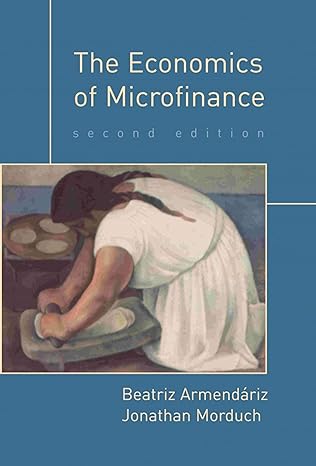A bank is considering extending loans to a population of four borrowers with identities A, B, C,
Question:
A bank is considering extending loans to a population of four borrowers with identities A, B, C, and D. Borrowers A and B are of type 1, while C and D are of type 2. The bank cannot observe borrowers’ types, but it knows that there are two borrowers of type 1 and that the others are of type 2. With a \($100\) loan, a type 1 borrower can invest in a project and get a gross return of y1 = \($200\) with certainty, while type 2 borrower can obtain a gross return of y2 = \($360\) with probability p = 75 percent. The opportunity cost for a borrower of type 1 and 2 are, respectively, \($18\) and \($20.\) The gross cost of loan of a \($100\) loan is \($160\) .
The bank is competitive and/or just wants to break even.
a. If group-lending mechanism cannot be implemented in this economy, can all agents borrow? If so, what would be the interest charged by the bank in this case? Briefly explain your answer.
b. Now suppose that the bank can lend to a group of two, and that it can also observe the final return of each agent. Assume that the bank imposes the “joint responsibility default clause” in that a borrower will have to pay for her partner when her partner fails, or both borrowers will be excluded from future refinancing, which is infinitely costly.
Compute the interest rate at which the bank will lend in this case.
Briefly explain your answer.
Step by Step Answer:

The Economics Of Microfinance
ISBN: 978-0262513982
2nd Edition
Authors: Beatriz Armendariz ,jonathan Morduch





